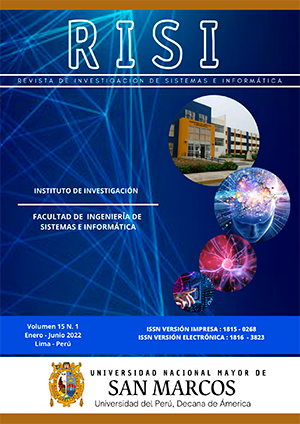Heart Disease early detection using the Machine Learning
DOI:
https://doi.org/10.15381/risi.v15i1.23739Keywords:
Machine learning, heart disease, classificationAbstract
This research work have objective to compare the accuracy of seven classification algorithms for a set of data on heart diseases, allowing early detection in the patient who will have suspicion or not of the presence of this disease that simply cannot be detected. detect . The scope of the project is limited to analyzing two hundred and ninety-nine patients who underwent their tests for the creation of this data set, with the possibility of continuing to carry out constant tests to improve the quality of the information in the test. For the classification process, 25% will be tested for training versus 75% of the records as a sample, which will go through each of the models using the Confusion Matrix and the Auc Roc curve. It was observed that the precision in the Linear Regression model was 87.3%, while in the Auc Roc curve a reliability of 91% was obtained for the MultiLayer Perceptron Prediction model. The information from the tests carried out allows obtaining considerable precision in terms of the Linear Regression model, indicating that it works correctly with it, however, with a greater number of records, the results currently obtained could be further improved.
Downloads
Downloads
Published
Issue
Section
License
Copyright (c) 2022 Dick Díaz Delgado

This work is licensed under a Creative Commons Attribution 4.0 International License.
AUTHORS RETAIN THEIR RIGHTS:
a. Authors retain their trade mark rights and patent, and also on any process or procedure described in the article.
b. Authors retain their right to share, copy, distribute, perform and publicly communicate their article (eg, to place their article in an institutional repository or publish it in a book), with an acknowledgment of its initial publication in the Revista de investigación de Sistemas e Informática.
c. Authors retain theirs right to make a subsequent publication of their work, to use the article or any part thereof (eg a compilation of his papers, lecture notes, thesis, or a book), always indicating its initial publication in the Revista de investigación de Sistemas e Informática (the originator of the work, journal, volume, number and date).


